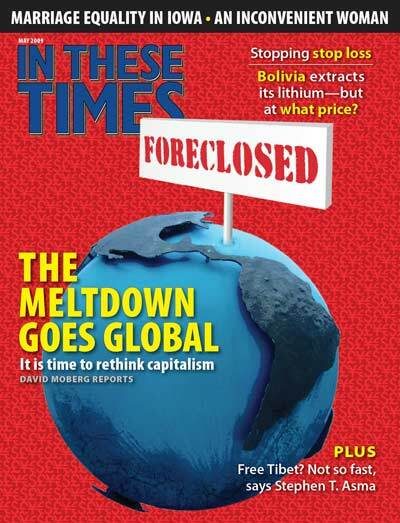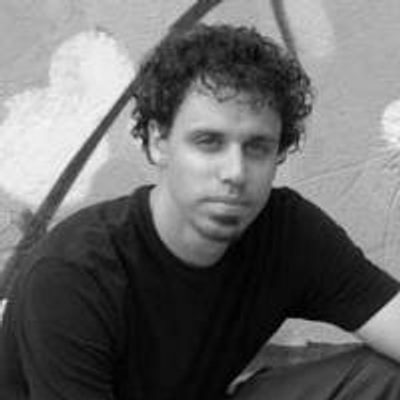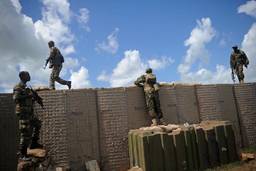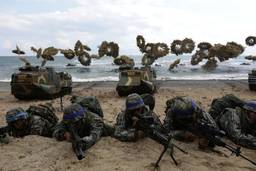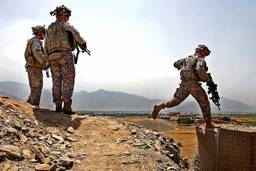Casualties Continue in Vietnam
The devastation of unexploded ordnance from the ‘American War.’
Nick Turse
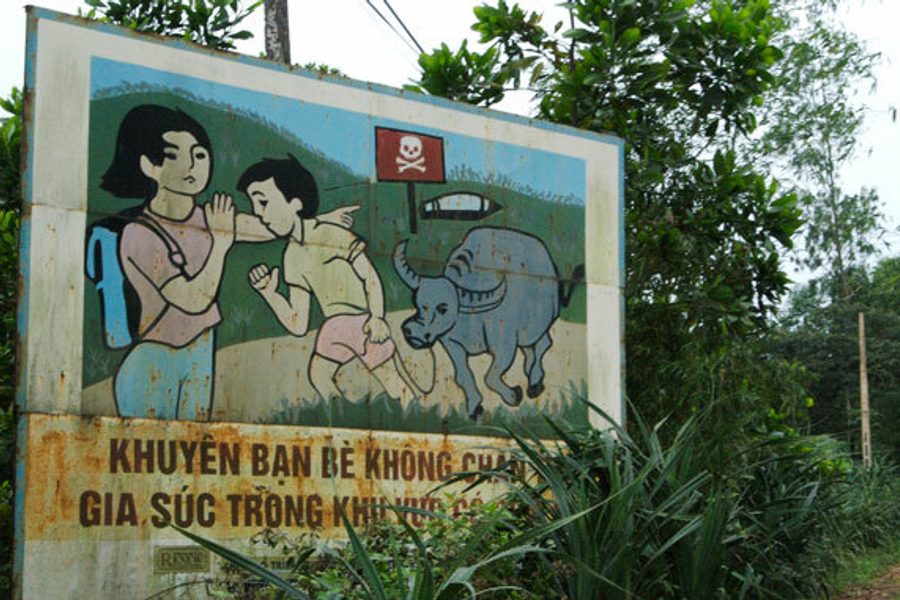
DAI NGHIA VILLAGE, Vietnam – A house sits vacant off a dirt path in Dai An hamlet. The concrete home has a rusted corrugated metal roof, and attached to the building is a small, open-air structure standing on wood supports. Its metal roof is pockmarked with holes that allow sunlight to filter in.
People in the hamlet hear mournful cries when they near the home.
Down the same path, about 160 feet away, a smaller building houses the family that once lived in the vacant home – but the family has one less son. And there’s crying here, too: the sobs of a mother.
Across the street, on the front steps of a blue-tinged home sits a woman, with red eyes and a tear-streaked face, who is all but overcome with grief. Her young son clings to her arm and he blots her eyes with the bandage that normally covers his scarred neck.
This is life in Quang Nam Province in central Vietnam. Two families wrecked. Two children dead. Two physically wounded. One psychologically damaged. All a result of a conflict – known in this country as the American War – that may have “officially” ended in 1975, but continues to claim lives.
Bombs, not gold
In 2004, Nguyen Huu Tien, 43, and his wife, Tran Thi Dam, 37, suffered what all parents fear: the loss of a child. Their son Nguyen Huu Truong, 13, “was very gentle. He usually stayed at home, he didn’t hang out,” says his mother.
He was on his way home from school one February day when he found a small, spherical metal object lying in a field where a new clothing factory was being built. He picked it up and brought it home.
Once there, he and his cousin, Vo Van Trieu, used tongs and a hammer to open it while a 6-year-old neighbor, Nguyen Vu Lan, looked on. What they had was a bomblet from a cluster bomb unit (CBU), a U.S. military submunition with hundreds of tiny ball bearings inside.
Later that afternoon, a neighbor called Nguyen Huu Truong’s parents Nguyen Huu Tien and Tran Thi Dam at the fish factory where they worked. The neighbor gave no details, saying only that a family emergency required them to come home right away, Tran says before bursting into tears.
Standing at the spot of the explosion, neighbor Nguyen The Van, 54, says he entered the room to find the table and chairs broken and Vo – the cousin – lying on the floor with his intestines snaking out onto the ground. Nguyen Huu Truong, however, had born the brunt of the blast. The front side of his body had been shredded.
Six-year-old Nguyen Vu Lan, who had been sitting just a short distance away from the others, had a broken jaw and wounds to his throat, abdomen and legs. His injuries kept him in the hospital for three months. Since then, he has spent two months per year in various medical facilities.
Today, the lanky 9-year-old with a scarred jaw is saddled with respiratory problems, speaking only a few words in a whispery croak. He looks frail. With the bandage removed from his throat, tiny bubbles of fluid appear from a small wound amid surrounding scar tissue.
His mother, Nguyen Thi Thanh Son, 36, brings out a stack of medical documents as we sit on her front step. The family receives subsidized medical care, but even with this partial support of his treatment, their bills are immense. She says her son needs a medical procedure for his throat that officials in Hanoi can’t provide.
“I want my son to go to the U.S. for an operation to return his voice,” she says.
Asked what she would say to the citizens of the United States if she could, she says, “The American people should take responsibility. … They should act in a humanitarian manner. These are the consequences of the American War.”
American bombs, artillery shells, rockets, landmines, grenades and other types of unexploded ordnance (UXO) litter Vietnam. And an untold number of bomblets are a particular killer of children, not only in Vietnam, but also in Laos and Cambodia, where the United States waged war during the 1960s and early 1970s.
Bomblets from cluster bombs are sometimes small and round like a ball, sometimes brightly colored, sometimes both. They often look like toys. But these boys thought they had found riches, not a plaything. Tran Thi Dam – one of the dead boys’ mothers – says that a friend of her son’s later told them that Nguyen Huu Truong had heard there was gold inside the metal sphere.
An orphan’s song
Pham Thi Hoa’s family suffered grievously from the American War. One set of great-grandparents were killed when their hamlet was bombed in 1969. That same year, a great-aunt and three of her children were killed in the same fashion. Their losses, however, did not end with the war.
Sometime after 1975, Pham’s other great-grandfather was killed by a landmine. A great-uncle suffered the same fate in 1996. But Pham – born long after the guns of that conflict fell silent – should have been immune from the ravages of war. Yet in late 2007, the same war that claimed the lives of so many members of her family tore this 8-year-old’s world apart.
Her father, Pham Van Nghia, 30, was a farmer by trade. Born and raised in Hamlet #6, in Duy Nghia village, he grew staple crops of this region – rice, beans and sweet potatoes. He also supplemented his income by detecting metals and selling them for scrap.
He had found artillery shells in the past and they provided money for his wife, Le Thi Tai, two daughters and 3-year-old son, Pham Van Thanh. From the metal of a 105 mm artillery shell, Pham Van Nghia could make roughly 100,000 VND (about $6.25) – a large sum in a country where the per capita income, according to the U.S. State Department, is about $2 per day.
At approximately 4:15 p.m. on Aug. 21, 2007, Pham Van Nghia was in his home, attempting to take a 105 mm artillery shell apart. His son and wife were close by, his elder daughter was sleeping in the back room and young Pham Thi Hoa was just across the narrow path that runs in front of the home, playing in a large sandy expanse. Moments later, everyone but her sister was dead.
Today, the two daughters spend a great deal of their time at their grandparents’ house – only a two-minute walk from their parents’ home. Both attend school. That’s where the elder girl was when I visited the family farm. I had resolved to learn about the tragedy, after reading a 66-word article about the death of three members of a family from UXO on the Australia Broadcasting Corporation’s website – one of the dishearteningly frequent news pieces of this sort that filter into the Western media each year.
The girls’ grandmother, Le Thi Huong, told me that soon after the explosion, a delegation from the S.O.S. Children’s Village – a charitable enterprise that cares for youngsters who have lost their parents to war, famine, disease or poverty – arrived and offered to care for the children until age 18. This, however, would have meant the girls would have to live relatively far away. The girls rejected the offer, preferring to stay close to home, where they could venerate their parents.
“I can take care of them and, one day, if I pass away, their aunts and uncles will do the same,” Le Thi Huong says.
I couldn’t bear to ask the 8-year-old with big brown eyes and an infectious smile anything about the tragedy that killed most of her immediate family. She was led out of earshot while her grandmother began relating the bare facts of the gruesome story. Talk of bodies sheared in half and a child reduced to a basketful of viscera.
When Pham Thi Hoa ultimately bounded back in, I ask about her favorite activities. Dancing and singing, she replies. With a bit of familial prompting, she begins to sing a haunting Vietnamese song in her tiny voice. After the finale, and our laudatory clapping, I ask where she had learned that song. Her response nearly rips my heart out. It was a folk song, I was told. A song about orphans.
“That’s the song my father sang when he was alive,” she says. “When I sing it, I remember him.”
Aiding and abating
The team from Project RENEW had a good day. The 16-member Vietnamese unit, overseen by Australian explosive ordnance disposal supervisor Mark Fitzpatrick, located an M-79 round – a 40 mm high-explosive projectile fired from a breach-loading, single-shot U.S. grenade launcher – in a field.
Initiated in December 2000, as a cooperative effort between the nonprofit, U.S.-based Vietnam Veterans Memorial Fund and the Quang Tri Province People’s Committee, Project RENEW focuses on UXO awareness education, victims’ assistance and explosives removal. This particular Project RENEW clearance project is supported by Golden West Humanitarian Foundation – a U.S. nonprofit charity with 10 years of experience in explosive ordnance abatement projects in Angola, Azerbaijan, Cambodia, Iraq and Mozambique.
The site, in central Vietnam’s Quang Tri Province, is slated to become the home of a new village, complete with a factory and other commercial entities, on an eight-hectare plot with an adjoining 19 hectares set aside for residential living space.
But first, deadly explosives lying on, and just below, the surface must be cleared. Since 1975, when the war ended and the country was unified, similar explosives have caused more than 100,000 casualties in Vietnam according to the Vietnamese Defense Ministry’s Technology Centre for Bomb and Mine Disposal (BOMICEN).
Standing next to an innocuous-looking, egg-sized metal object lying in the dirt next to us – with a 16-foot “kill radius” and the power to destroy a car – I ask Fitzpatrick what it would take to set it off.
“Pick it up,” he says matter-of-factly.
After the final preparations for disposal are made, the Project RENEW crew vacates the area, leaving behind only team leader Nguyen Duc Hoa, who places the explosive charge for Fitzpatrick to detonate from behind a metal shipping container.
With that grenade gone, it’s eight less ounces of UXO for Vietnamese civilians to worry about. That leaves only somewhere between 350,000 and 800,000 tons to go, according to estimates by BOMICEN.
The Project RENEW team has been working on this site for one week and this is already the second piece of ordnance recovered (the other was a 2.75-inch rocket found close by). During an end-of-the-day pep talk, Fitzpatrick congratulates the team and offers a case of Huda – a local beer brewed in Hue, the ancient capital city – to the first man to find an actual bomb.
Nguyen Duc Hoa has all the incentive he needs, however. “It’s a new job for me,” he confides, having worked in the field of explosives clearance for just six months. “If I can do this job well, I can help the local people here to avoid accidents,” he says.
Accidents, like unexploded ordnance, have been plentiful here. Tran Van Thanh, a Trieu Phong District official, estimates that approximately 1,300 people have been killed, in his district alone, from UXO since 1975. For the rest of Quang Tri Province – which saw some of the heaviest bombing during the war – UXO has caused 6,760 casualties, according to a 2006 survey by the Vietnamese Ministry of Defense.
Ending the casualties
BOMICEN estimates that it will take many years and tens of billions of dollars to clear Vietnam of all the UXO littering the country. Fitzpatrick, who has since moved on to work in Afghanistan, is even less optimistic.
“My personal view is that it is going to take an act of God to clear Vietnam because of all the issues that are present with all the committees and steering boards, along with the fact that the Vietnamese want money from international donors but do not want to adhere to international standards,” he writes in an e-mail.
But Chuck Searcy, a U.S. Vietnam War veteran who has lived in the country for almost 15 years and serves as the Vietnam Veterans Memorial Fund’s representative for Project RENEW, believes that it is doable in the near term.
“With adequate funding and international support, a comprehensive strategic plan and solid management at all levels of the Vietnamese government, and with designation of this effort as a top priority of the government, Vietnam could be cleaned up and made safe within the 10-year deadline set by the terms of the Cluster Munitions Treaty,” says Searcy, referring to the Convention on Cluster Munitions, brought into effect last December. (Its 96 signatory countries – which do not include the United States or Vietnam – pledged never to use, produce, sell or stockpile cluster bombs and to clear all UXO within 10 years.)
Searcy, who emphasizes that he lacks technical experience in UXO clearance, is, however, an expert on the collaborations between the Vietnamese government and international organizations in regard to the UXO problem. He doesn’t believe it will be easy to coordinate the activities of the Vietnamese military and all the nongovernmental organizations involved in combating UXOs, keep corruption out of the process or prevent the international NGOs from setting unrealistic standards. But he’s hopeful enough to think it’s possible in the not-too-distant future.
“If the national campaign were focused on a 10-year deadline, and the entire spectrum of technical services and human capital were mobilized,” Searcy says, “I think it is plausible that at the end of the decade Vietnam could reasonably claim to have mostly cleaned up the country and made it safe, or at least reduced the risk to a level that would be manageable into the foreseeable future.”
Any future efforts will come too late for Nguyen Vu Lan and Pham Thi Hoa. But, if something like Searcy’s proposal were to succeed, their children could live in Vietnam with many fewer new casualties of the American War.
